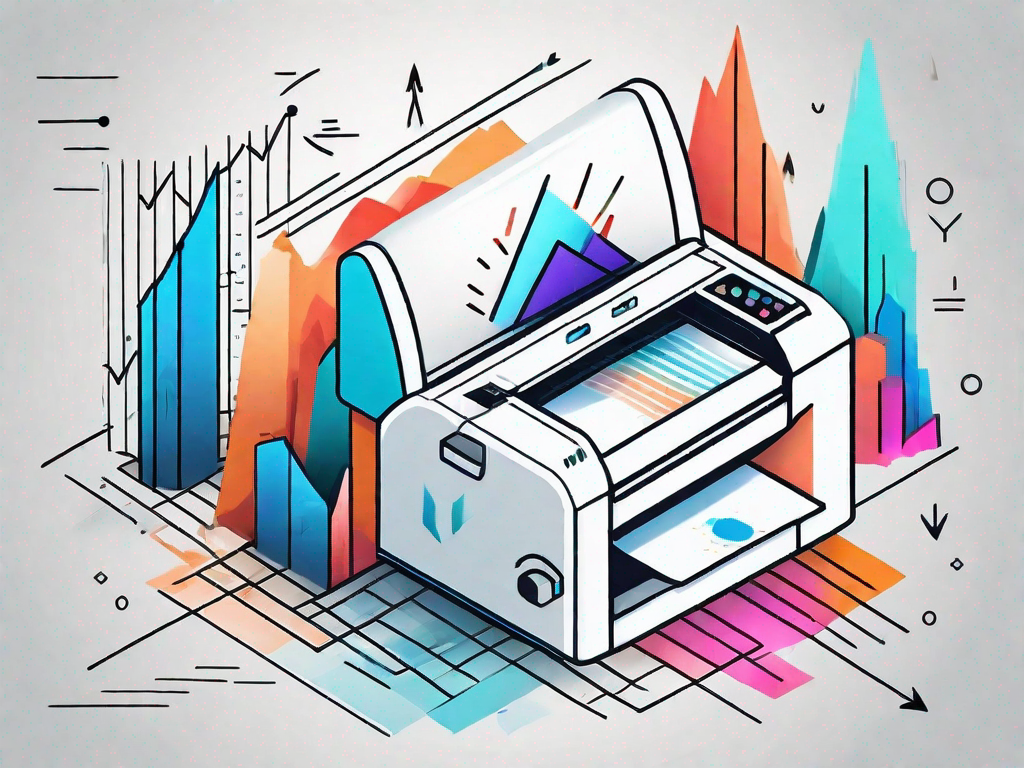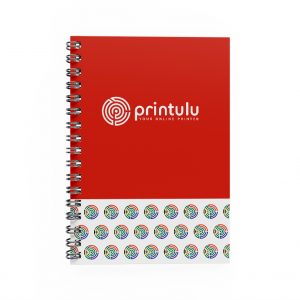
In today’s fast-paced business environment, maximising return on investment (ROI) is crucial for the success and growth of any company. One key area where businesses can achieve this is through the utilisation of digital printing services. In this article, we will explore the concept of ROI in digital printing and the strategies that can be employed to maximise its potential.
Understanding the concept of ROI in digital printing
Before delving into strategies, it is important to grasp the significance of ROI in business. ROI measures the profitability of an investment relative to its cost. In the context of digital printing services, ROI can be calculated by evaluating the impact of these services on sales, brand recognition, and customer engagement.
When it comes to running a successful business, understanding the concept of return on investment (ROI) is crucial. ROI serves as a financial metric that enables businesses to evaluate the effectiveness of their investments. It provides valuable insights into which strategies and initiatives are generating the highest returns, allowing companies to make data-driven decisions to optimise their resources and investment allocation.
The importance of ROI in business
ROI is not just a fancy acronym; it holds immense importance in the world of business. By measuring the return on investment, companies can determine the profitability of their endeavors. This helps them gauge the success of their strategies and make informed decisions about resource allocation.
For instance, let’s say a company invests a significant amount of money in digital printing services to create promotional materials. By calculating the ROI, the company can assess whether the investment was worth it. If the ROI is high, it indicates that the digital printing services have positively impacted the company’s sales, brand recognition, and customer engagement, making it a worthwhile investment.
How digital printing affects ROI
Digital printing has revolutionised the marketing and advertising landscape, providing businesses with cost-effective solutions that can enhance their ROI. In today’s fast-paced world, where time is of the essence, digital printing offers a quick and efficient way to produce high-quality printed materials.
With digital printing, companies can create targeted campaigns that resonate with their desired audience. By tailoring the content and design of their printed materials, businesses can capture the attention of potential customers and increase the likelihood of conversions. This level of customisation and personalisation is a game-changer when it comes to maximising ROI.
Moreover, digital printing allows for flexibility and agility in marketing strategies. Companies can easily modify and update their printed materials to align with changing market trends or promotional offers. This adaptability ensures that businesses stay relevant and maintain a competitive edge, ultimately contributing to a higher ROI.
Furthermore, digital printing eliminates the need for large print runs, reducing costs associated with excess inventory. Traditional printing methods often required companies to print materials in bulk, leading to wastage if the demand did not meet expectations. With digital printing, businesses can print on demand, minimising the risk of overproduction and optimising their ROI.
In conclusion, understanding the concept of ROI in digital printing is crucial for businesses aiming to maximise their profitability. By leveraging the benefits of digital printing, such as targeted campaigns, flexibility, and cost-effectiveness, companies can enhance their ROI and achieve long-term success.
The role of digital printing services in maximising ROI
Digital printing services play a pivotal role in helping businesses capitalise on the benefits of this modern printing technology. In today’s fast-paced and competitive business landscape, it is crucial for companies to stay ahead of the curve and make the most of every opportunity to maximise their return on investment (ROI).
When it comes to marketing and promotional materials, digital printing offers unparalleled versatility. Gone are the days when businesses were limited to printing on paper alone. With digital printing, companies can now print on a wide range of materials, including vinyl, fabric, and even unconventional surfaces like wood and metal. This opens up a whole new world of possibilities for businesses to create customised marketing collateral that truly stands out.
Imagine being able to print vibrant and eye-catching posters on fabric for a fashion event, or durable vinyl banners for an outdoor advertising campaign. The versatility of digital printing allows businesses to tailor their marketing materials to their target market, ensuring maximum impact and engagement.
The versatility of digital printing
One of the key advantages of digital printing is its versatility. With the ability to print on a wide range of materials, including paper, vinyl, fabric, and more, businesses can create customised marketing collateral tailored to their target market. From brochures and flyers to posters and banners, the possibilities are endless.
Moreover, digital printing offers the flexibility to print variable data, allowing businesses to personalise their marketing materials for different customer segments. This level of customisation can significantly enhance the effectiveness of marketing campaigns, as personalised messages tend to resonate more with consumers.
Additionally, digital printing enables businesses to experiment with different designs and layouts without incurring significant costs. With traditional printing methods, making changes to a design or layout would require costly reprints. However, with digital printing, businesses can make adjustments on the fly, ensuring that their marketing materials are always up to date and aligned with their branding.
Cost-effectiveness of digital printing
Unlike traditional printing methods, digital printing eliminates the need for lengthy set-up processes and plate-making costs. With low setup costs and no minimum order requirements, businesses can benefit from cost savings, especially for smaller print runs. This cost-effectiveness translates directly into higher ROI as companies can invest their resources in other critical areas of their business.
Furthermore, digital printing allows for on-demand printing, meaning businesses can print only the quantity they need when they need it. This eliminates the risk of overstocking or wastage, further reducing costs and increasing ROI. Additionally, digital printing offers faster turnaround times, enabling businesses to respond quickly to market demands and changes.
Another cost-saving aspect of digital printing is the ability to print in smaller batches. This is particularly beneficial for businesses that frequently update their marketing materials or run targeted campaigns. Instead of printing a large quantity of materials upfront, businesses can print smaller batches as needed, reducing the risk of obsolescence and ensuring that their marketing materials are always fresh and relevant.
In conclusion, digital printing services are a valuable asset for businesses looking to maximise their ROI. The versatility of digital printing allows for the creation of customised marketing materials that resonate with the target audience, while the cost-effectiveness of this printing technology ensures that businesses can allocate their resources strategically. By embracing digital printing, businesses can stay ahead of the competition and make the most of every marketing opportunity.
Key strategies for maximising ROI with digital printing
To ensure maximum ROI with digital printing services, businesses must employ the right strategies and optimise their printing processes.
One important strategy for maximising ROI with digital printing is to carefully choose the right digital printing service. When selecting a digital printing service, it is essential to consider their expertise, print quality, turnaround time, and customer reviews. The right partnership will ensure that the printed materials accurately reflect your brand, making a lasting impression on your target audience.
Moreover, businesses should also focus on optimising their design specifically for digital printing. To fully leverage the potential of digital printing, businesses should optimise their designs to align with the capabilities of the technology. This includes utilising high-resolution images, selecting appropriate fonts, and ensuring proper colour calibration. By working closely with the digital printing service provider, businesses can achieve the desired results that align with their objectives.
However, there are other factors that businesses should consider when maximising ROI with digital printing. One such factor is the choice of paper and materials. The type of paper used can greatly impact the final printed product. For example, choosing a high-quality, coated paper can enhance the visual appeal and durability of the printed materials. Additionally, businesses should also consider using eco-friendly materials, as sustainability is becoming increasingly important in today’s market.
Another strategy for maximising ROI with digital printing is to personalise the printed materials. Personalisation can greatly enhance the effectiveness of marketing campaigns and improve customer engagement. By leveraging customer data and digital printing technology, businesses can create customised materials that resonate with individual recipients, leading to higher response rates and ultimately, increased ROI.
Furthermore, businesses should also consider integrating digital printing with other marketing channels. By combining digital printing with online marketing efforts, businesses can create a cohesive and impactful marketing campaign. For example, using QR codes or personalised URLs on printed materials can drive traffic to specific landing pages or websites, allowing businesses to track the effectiveness of their campaigns and make data-driven decisions.
In conclusion, maximising ROI with digital printing requires a strategic approach. By carefully choosing the right digital printing service, optimising design, considering paper and materials, personalising the printed materials, and integrating digital printing with other marketing channels, businesses can achieve higher ROI and make a lasting impression on their target audience.
Here are 9 Strategies for our Digital Printing Services:
1. Targeted Direct Mail Campaigns:
Utilise digital printing for personalised direct mail campaigns. Sending targeted and personalised mailers to a specific audience can yield higher response rates and engagement.
A real estate agency uses targeted direct mail campaigns to promote new property listings. They print personalised postcards featuring property images and details, addressing specific neighbourhoods based on demographic data. This personalised approach increases engagement and attracts potential buyers.
2. Variable Data Printing for Personalisation:
Implement variable data printing to personalise marketing materials. Customising content based on recipient data can increase relevance and effectiveness.
An e-commerce company sends out a catalogue with variable data printing, showcasing products tailored to individual customer preferences. Each catalogue includes personalised product recommendations based on the customer’s past purchases and browsing history, enhancing the relevance of the content.
3. Promotional Product Branding:
Extend branding efforts by printing logos and promotional messages on various products such as pens, notepads, and other promotional items. These tangible items can serve as effective marketing tools.
A tech company uses digital printing to brand promotional items given away at a trade show. They print their logo and a QR code on USB drives, creating a useful and branded giveaway that serves as a constant reminder of their brand when attendees use the USB drive.
4. Event Marketing Collateral:
Enhance the impact of events by creating visually appealing and branded marketing collateral, such as banners, posters, and brochures. This can increase brand visibility and leave a lasting impression.
A fitness studio prints vibrant and energetic posters and banners for a community health and wellness event. The visually appealing collateral helps the studio stand out at the event, attracting attendees to learn more about their fitness programs and promotions.
5. Point-of-Purchase Displays:
Create eye-catching point-of-purchase displays for retail locations. Well-designed displays can attract attention and influence purchasing decisions at the point of sale.
A cosmetic brand uses digital printing to create captivating point-of-purchase displays in retail stores. These displays feature high-quality images and information about new product launches, influencing customers to make impulse purchases.
6. Custom Packaging:
Use digital printing for custom packaging to enhance the presentation of products. Unique and attractive packaging can differentiate a brand and leave a positive impression on customers.
A gourmet chocolate company invests in custom-printed packaging for their holiday-themed chocolate boxes. The festive and unique packaging not only protects the chocolates but also enhances the overall gift-giving experience, making the product more attractive to customers. Think of Woolworths 🙂
7. Limited Edition or Seasonal Campaigns:
Run limited edition or seasonal marketing campaigns with unique printed materials. This can create a sense of exclusivity and urgency, encouraging customers to take action.
A fashion retailer runs a limited edition digital printing campaign for holiday-themed T-shirts. The designs are exclusive to the season, creating a sense of urgency and encouraging customers to purchase these unique and festive apparel items.
8. QR Codes and Augmented Reality (AR):
Integrate QR codes and AR elements in printed materials to provide interactive experiences. This can lead customers to online content, promotions, or additional product information, enhancing engagement.
An electronics manufacturer prints QR codes on product brochures. When customers scan the QR code, they are directed to an AR experience that allows them to virtually explore the features of a new product, enhancing their understanding and engagement.
9. Feedback and Response Mechanisms:
Include response mechanisms in printed materials, such as QR codes or specific URLs, to track the success of campaigns. This data can be valuable for analysing the ROI of different marketing initiatives.
An online subscription service includes QR codes on their printed marketing materials, leading customers to a feedback survey. By analysing the responses, the company gathers valuable insights into customer satisfaction and preferences, informing future marketing strategies.
Overcoming challenges in maximising ROI
Although digital printing offers numerous advantages, businesses may encounter certain challenges that can impact ROI. It is vital to address these challenges effectively to reap the full benefits of digital printing services.
One common challenge businesses face when it comes to digital printing is color inconsistencies. Ensuring that the colors on the printed materials match the intended design can be a tricky task. However, by partnering with a reliable digital printing service provider, businesses can overcome this challenge. These providers have advanced color management systems in place that ensure accurate color reproduction, resulting in consistent and visually appealing prints.
Another issue that businesses may encounter is image quality. Blurry or pixelated images can diminish the impact of printed materials and reflect poorly on the brand. To tackle this challenge, it is essential to work with a digital printing service provider that uses high-resolution printing equipment. These printers can produce sharp and clear images, enhancing the overall quality of the printed materials.
Paper selection is another aspect that can affect the effectiveness of digital printing. The choice of paper can influence how the colors appear, the durability of the printed materials, and even the tactile experience for the recipients. By collaborating with a knowledgeable digital printing service provider, businesses can receive guidance on selecting the most suitable paper for their specific needs. Whether it’s a glossy finish for vibrant colors or a matte finish for a sophisticated look, the right paper choice can significantly enhance the impact of printed materials.
Dealing with common printing issues
Issues such as colour inconsistencies, image quality, and paper selection can impact the overall effectiveness of printed materials. By partnering with a reliable digital printing service provider, businesses can overcome these challenges and achieve consistent, high-quality prints that resonate with their target audience.
Moreover, digital printing service providers often offer additional services to address specific challenges. For instance, they may provide color correction services to ensure that the printed materials match the intended design. This can be particularly beneficial for businesses that rely heavily on accurate color representation, such as those in the fashion or interior design industries.
Furthermore, some digital printing service providers offer image enhancement options. These options can help businesses enhance the quality of their images, making them more visually appealing and impactful. By utilising these services, businesses can ensure that their printed materials stand out and leave a lasting impression on their audience.
Ensuring quality in digital printing
To maximise ROI, it is crucial to ensure that all printed materials meet the highest quality standards. Regular quality control checks, including reviewing proofs, inspecting final prints, and verifying colour accuracy, can help businesses maintain a consistent and professional image that enhances their brand reputation.
Additionally, businesses can take advantage of the latest advancements in digital printing technology to further enhance the quality of their prints. For example, some digital printers now offer variable data printing capabilities, allowing businesses to personalise their printed materials for each recipient. This level of customisation not only adds a personal touch but also increases the chances of engagement and conversion.
Moreover, digital printing service providers often have a team of experienced professionals who can provide valuable insights and recommendations. By collaborating with these experts, businesses can benefit from their knowledge of the latest trends and techniques in digital printing, ensuring that their printed materials are not only of high quality but also aligned with industry best practices.
In conclusion, while challenges may arise when maximising ROI with digital printing, businesses can overcome them by partnering with reliable service providers, addressing common issues, and ensuring quality through regular checks and advancements in technology. By doing so, businesses can unlock the full potential of digital printing and achieve the desired results for their marketing and branding efforts.
Future trends in digital printing and their impact on ROI
As technology continues to evolve, so does digital printing. Being aware of the latest trends can help businesses stay ahead of the competition and maximise their ROI.
Technological advancements
Advancements such as 3D printing, variable data printing, and augmented reality integration are reshaping the digital printing landscape. By leveraging these technologies, businesses can create engaging and interactive print materials that capture audience attention, driving higher ROI.
Read about the future of Digital Printing in our updated article where we interviewed a leading distributor of Xerox for their insight.
Read Now
The evolving market for digital printing services
The market for digital printing services is continually expanding, offering businesses access to an extensive range of printing options and solutions. Staying informed about new service providers, competitive pricing, and emerging trends can help businesses make smart decisions and secure the highest ROI.
Maximising ROI with digital printing services requires a strategic approach, considering factors such as versatility, cost-effectiveness, and quality. By understanding the concept of ROI in digital printing, choosing the right digital printing service, and staying current with technological advancements, businesses can harness the power of digital printing to achieve exceptional results and propel their success.



